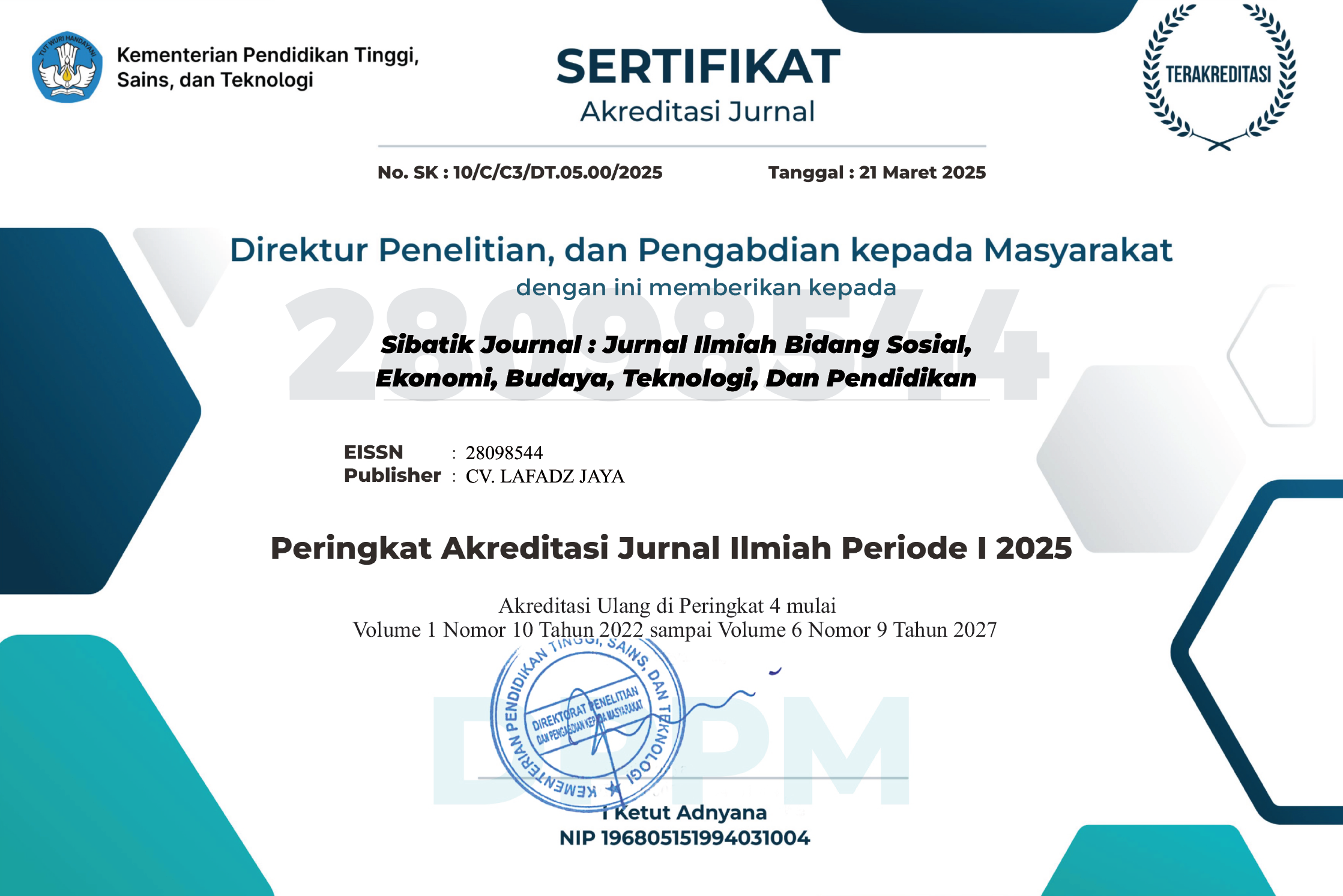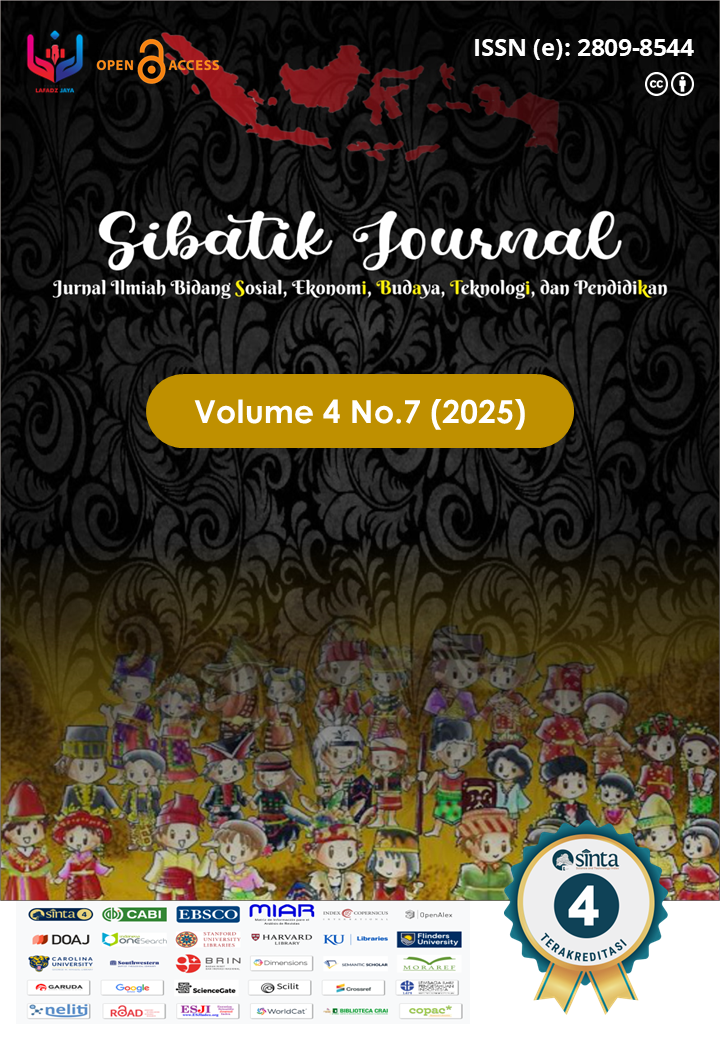ANALYSIS OF THE INFLUENCE OF INFLATION, EXCHANGE RATE, AND POPULATION ON INDONESIA'S ECONOMIC GROWTH 1993–2023: VECM APPROACH
Main Article Content
Ahmad Aqil Widyantoro
Hastarini Dwi Atmanti
This study aims to analyze the influence of inflation, exchange rate, and population on Indonesia’s economic growth from 1993 to 2023 using the Vector Error Correction Model (VECM) approach. The research utilizes secondary data obtained from the Central Statistics Agency (BPS) and the World Bank. The stationarity test shows that most variables become stationary at the first difference. Johansen cointegration test results indicate a long-term equilibrium relationship among the variables. In the short run, VECM estimation results show that only the population variable is significantly affected by changes in other variables, while inflation and exchange rate do not show significant short-term impacts. The Impulse Response Function (IRF) and Variance Decomposition analysis confirm that population has a more dominant and persistent effect on economic growth compared to inflation and exchange rate, both of which exhibit relatively weak influence. These findings highlight the strategic role of demographic dynamics in shaping macroeconomic performance. Therefore, improving population quality and managing demographic trends should be prioritized in national development planning to support inclusive and sustainable economic growth in Indonesia.
Astuti, C. P., & Prasetyanto, P. K. (2022). Analisis Pengaruh Jumlah Penduduk, Inflasi, Dan Nilai Tukar Terhadap Pertumbuhan Ekonomi Pendekatan VECM. Transekonomika: Akuntansi, Bisnis dan Keuangan, 2(6), 225-244.
Badan Pusat Statistik. (2025). Tingkat inflasi harga konsumen nasional tahun kalender (Y-to-D) (2022=100). Diakses dari https://www.bps.go.id/id/statistics-table/1/OTE0IzE=/tingkat-inflasi-harga-konsumen-nasional-tahun-kalender--y-to-d---sup-1--sup---2022-100-.html pada tanggal 14 April 2025.
Gujarati, D. N., & Porter, D. C. (2009). Basic econometrics (5th ed.). McGraw-Hill.
Kalalo, H. (2016). Analisis faktor-faktor yang mempengaruhi inflasi di Indonesia periode 2000-2014. Jurnal Berkala Ilmiah Efisiensi, 16(1).
Kementerian Perdagangan Republik Indonesia. (2025). Nilai tukar mata uang asing terhadap rupiah. Satu Data Perdagangan. Diakses dari https://satudata.kemendag.go.id/data-informasi/perdagangan-dalam-negeri/nilai-tukar pada tanggal 14 April 2025
Krugman, P. R., & Obstfeld, M. (2009). International economics: Theory and policy. Pearson Education.
Mankiw, N. G. (2016). Principles of economics (7th ed.). Cengage Learning.
Muzakki, L. A. (2024). Analisis Pengaruh Pertumbuhan Ekonomi, Inflasi, Dan Nilai Tukar Mata Uang Asing Terhadap Profitabilitas Bank Umum Syariah Di Indonesia Periode 2016-2020. Jurnal Ilmiah Ekonomi Islam, 10(1), 29-35.
Obere, A., Thuku, G. K., & Gachanja, P. (2013). The impact of population change on economic growth in Kenya.
Syar’iyyah, A. (2022). THE EFFECT OF EXCHANGE RATES, INFLATION AND BI RATES ON PROFITABILITY IN ISLAMIC COMMERCIAL BANKS DURING THE 2016-2022 PERIOD. Journal of Islamic Economics, 1(95), 126-38.
Todaro, M. P., & Smith, S. C. (2020). Economic development (13th ed.). Pearson Education.
World Bank. (2024). Population, total - Indonesia. World Bank Data. Diakses dari https://data.worldbank.org/indicator/SP.POP.TOTL?locations=ID pada tanggal 14 April 2025.
World Bank. (2025). Pertumbuhan PDB tahunan (%): Indonesia. Diakses dari https://data.worldbank.org/indicator/NY.GDP.MKTP.KD.ZG?locations=ID pada tanggal 14 April 2025.
World Bank. (2025). GDP growth (annual %) - Indonesia. Diakses dari https://data.worldbank.org/indicator/NY.GDP.MKTP.KD.ZG?end=2023&locations=ID&start=2013 pada tanggal 14 April 2025.
World Bank. (2025). Official exchange rate (LCU per US$, period average) - Indonesia Diakses dari https://data.worldbank.org/indicator/PA.NUS.FCRF?locations=ID pada tanggal 14 April 2025.
Yadgari, M. R., & Yadgari, M. Z. (2025). Currency Crosscurrents: Nominal Exchange Rate and US Economic Growth (1960-2024). Social Science and Human Research Bulletin, 2(02), 32-49. https://doi.org/10.55677/SSHRB/2025-3050-0202

























